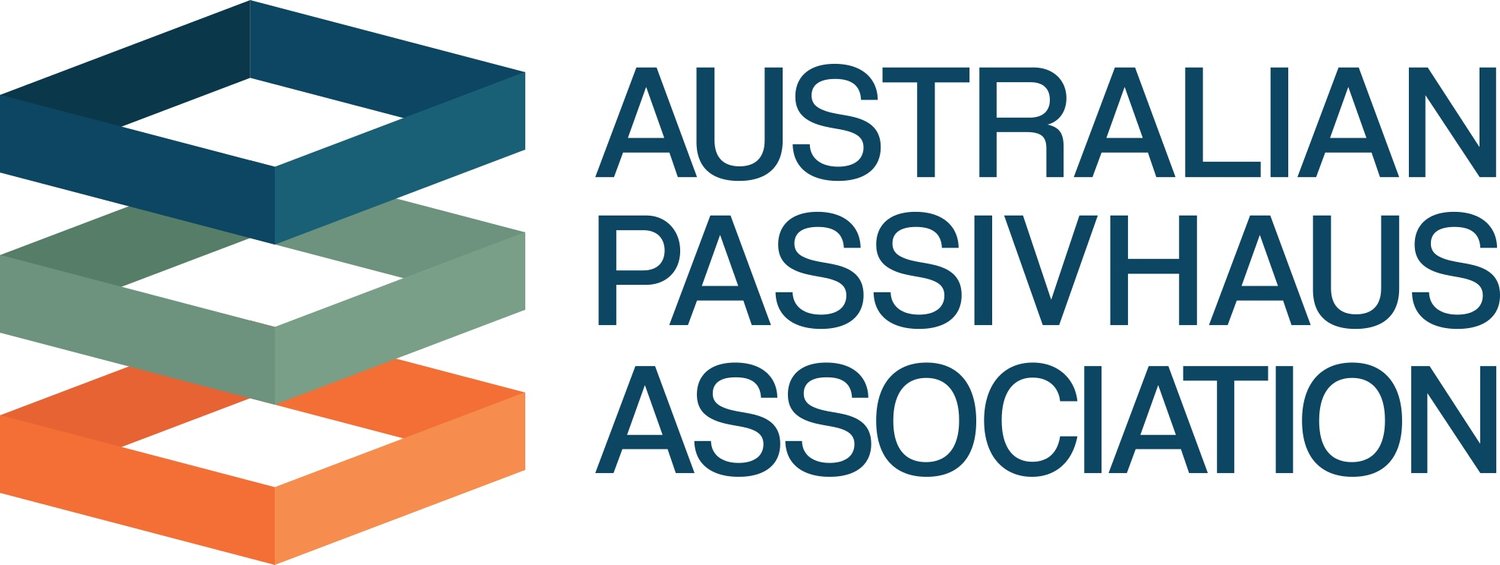Certified Passivhaus Tradesperson
The future of construction is in high-performance buildings, let us show you how to build them.
Course Overview
This course is for any design/build & construction professionals who are concerned about moisture control, air sealing, thermal bridging, healthy indoor air, durability, resiliency, and affordability of high performance.
In this course, you will gain the foundational Passivhaus Tradesperson knowledge necessary to prepare you to tackle your first Passivhaus project as well as write the Certified Passivhaus Tradesperson exam. Upon passing, you’ll become a PHI Certified Passivhaus Tradesperson (CPHT)—in other words, someone who is equipped to implement the Passivhaus building standard across varied building typologies.
It is a self-paced, on-demand CPHT course with live, online Trainer Q&A sessions, designed to help builders, contractors, and tradespeople prepare for the CPHT exam and learn the advanced building science skills of the Passivhaus standard.
Once your intake starts, you receive one year of access to the on-demand course content (accompanied by a printed manual), plus 7 live weekly online Q&A sessions (roughly one hour each) with our expert trainers.
Additionally, APA offers an opportunity to attend a one-day practical Passivhaus workshop by equipment and material suppliers, such as pro clima, Performance Membrane and Fantech covering installation protocols, tips and tricks on aspects like windows, ventilation, MVHR and more. Not included in the course.
CPD points are now available:
Architects: Informal 6 | Formal 6
Builders & Engineers: 12
Course Benefits
This course is designed to prepare you for writing the Certified Passivhaus Tradesperson (CPHT) exam. Some of the benefits you gain from participating in the course include:
Gain the necessary skills to successfully implement the Passivhaus standard in client projects, enabling them to obtain Passivhaus Certification.
Traditional construction has been proven ineffective and is outdated with building codes being increased across the nation. The CPHT course enables you to get well ahead of these code minimums, allowing you to future-proof your business and career.
Position yourself in a growing industry—the Passivhaus standard has grown astronomically across Australia and the globe. Additionally, consumer education in high-performance buildings is the highest it has been, with more demand to build Passivhaus buildings than the market can deliver.
Limit your liability and increase credibility by learning current best practices and building science to stay ahead of your competition.
Upon course completion, enjoy free membership to the Green Building Institute as well as a free listing on their Find a Green Tradie directory.
Course Curriculum
-
Review pioneer projects of the Passivhaus movement, and a number of built examples including different climate zones, building typologies and sizes.
Learn the definition of the Passivhaus building standard, and compare it to other concepts e.g. Passive Solar and Net Zero.
Appraise the cornerstones of the Passivhaus building thermal envelope, and how they affect health and comfort as well as energy efficiency.
Familiarise yourself with different players of the Passivhaus landscape, including research, training, quality assurance and certification.
-
Compare Passivhaus to the National Construction Code (NCC).
Learn to identify values for quality thermal envelopes in terms of energy, health, comfort, and indoor air quality.
Compare capital and operational savings for Passivhaus buildings.
Review key factors in the economics of high-performance building, including investment timeframe, energy market and thermal discomfort.
-
Identify key performance differences between thermal insulation and thermal mass, and how they impact different types of buildings.
Familiarise yourself with the thermal resistance and thermal transmittance of building assemblies, and compare the Passivhaus method with the NCC.
Compare typical U-values for Passivhaus buildings in different climate zones, and compare them with the NCC.
Review typical insulation materials, and their application depending on different construction methods.
-
Familiarise yourself with the definition of “thermal bridge”.
Learn about the consequences of thermal bridges on building energy performance and the risk of mould and condensation.
Review climate-specific metrics to verify the avoidance/mitigation of thermal bridges, and suitability for Passivhaus.
Identify typical thermal bridges for different construction methods, their risk level, and cost-effective ways to mitigate them.
-
Familiarise yourself with the comfort criterion Passivhaus requirement, and compare it to the hygiene criterion.
Compare the thermal performance of Passivhaus windows with NCC ones, and the consequences on thermal comfort and heating/cooling demand.
Identify subcomponents of windows and transparent components, and understand their implications for heat losses and solar gains.
Review different typical installation details for Passivhaus windows, and how detailing impacts performance.
-
Recap Passivhaus quality goals in the context of retrofitting existing buildings.
Understand the potential energy savings in building retrofits, and best practices to achieve the most cost-effective solutions.
Analyse risks associated with retrofitting different types of building structures, and ways to mitigate those risks.
Learn to apply the principles to a range of building typologies.
-
Familiarise yourself with different air and moisture transfer mechanisms, and their consequences in terms of energy efficiency and building damage.
Learn about PHI’s airtightness requirements, depending on different energy efficiency goals.
Review key factors of the blower door testing method, including Passivhaus-specific requirements.
Evaluate best practices for durable airtightness depending on different assemblies and construction methods.
-
Identify key metrics for indoor air quality and typical sources of air pollution inside buildings.
Learn about PHI’s requirements for mechanical ventilation systems, including energy consumption and heat recovery efficiency, air filtration, and noise control.
Evaluate common types of mechanical ventilation systems, including pros and cons depending on project application.
Review balancing and commissioning procedures for mechanical ventilation systems in Passivhaus building applications.
-
Familiarise yourself with key concepts of mechanical systems including heating, cooling and dehumidification, and domestic hot water.
Evaluate how the energy efficiency of Passivhaus buildings influences the suitability of specific systems and their operation.
Review innovative types of mechanical systems.
Learn about Primary Energy in relation to different energy vectors, and how that affects the energy offsetting process to meet Net Zero.
-
Review of construction photos.
Identify lacking or poorly executed details regarding Passivhaus construction in terms of airtightness and thermal insulation.
Provide brief instructions on how to solve these quality assurance issues.
-
The exam is based on the following learning targets and includes multiple choice questions, building site pictures, as well as small calculation and drawing exercises.
Once accredited, your certificate will be valid for 5 years and is internationally and nationally recognised.
Course Dates, Pricing and Registration
The Certified Passivhaus Tradesperson course (which includes exam preparation) is delivered online over a 7-week period with live Q&A Sessions held on a Thursday from 4 pm-5 pm AEST
Certified Trades Course Start Dates
August 14, 2025
Early bird pricing ends: July 31, 2025
October 30, 2025
Early bird pricing ends: October 16, 2025
Certified Trades Course Pricing
APA Members save over 10% on this course. Apply today.
Member
Early Bird Price: $1,950
Full Price: $2,380Exam: $712.50
Non-Member
Early Bird Price: $2,250
Full Price: $2,680Exam: $750
*10% GST added at check out for all listed pricing
Payment Plans for Certified Courses
Secure your place on the training course with a part payment. The cost of the course can be split into 4, 6 or 8 payments.
Full payment must be received prior to attending the course.
In the event that the course fills positions will be reallocated when a payment schedule has fallen behind and has missed payments. In the event that this happens, your spot will be reallocated to the next available date.
Contact our team at admin@passivhausassociation.au to arrange your payment plan.
In-House Tradesperson Training and Group Pricing Options
Many of our clients talk about the significant benefits of knowledge transfer with group training, as participants have a cohort to cross-reference lessons learnt and content by following the training during their practical application at work. Our pricing is structured so that the more you have on board, the more you’ll save.
Course FAQs
-
Yes, a company may be able to register their staff to attend this program. Discounts are available you have a company membership, for any staff listed in the membership's sub-profile, including discounts on courses and events. Once the staff member's sub-profile is activated, they can register for the course or event through their profile.
-
Yes. All sessions are recorded so that you can go back and review any challenging material. This also ensures that you’re still able to participate in the course in the case of availability emergencies. Recordings are available for 12 months on your education dashboard.
-
The course itself runs for 7 weeks. However, you will need to set aside additional time for exam preparation and writing the exam.
-
Yes. Before course commencement, you will be registered to the education dashboard where you'll have access to the online course content and slides. You will receive a slides book in the first week of the course.
-
Yes. Besides the live Q&A sessions on Thursdays, you will also have 12 months of access to an online discussion board, where you can ask any course-related questions.
-
At times, our department is required to combine courses or slightly shift dates due to unforeseen circumstances.
If this happens you will be added to the next course dates. For more detail on this please read our terms and conditions.
Our Educators
-
Scott runs a Passivhaus and Building Science consulting business, LAB Design, with his wife Madonna from the mid-north Coast of NSW. A Certified Passivhaus Designer and thermal modelling expert since 2014, he has contributed to a vast array of Passivhaus projects both in Australia and overseas, including his own, and has a passion for simplifying details for buildability and cost. Scott’s varied career experience prior to becoming a CPHD includes aeronautical engineering, building design, teaching and a 20-year Air Force aviation career, all contributing to his ability to problem solve with innovative and practical solutions.
-
Madonna began her career in the family construction company prior to enjoying a 12-year Air Force Aviation career. In addition to working on her own construction projects, Madonna contributes to the Passivhaus community through her work in the growing field of hygrothermal risk assessment (moisture management). In addition to studying science, she has completed an international study on hygrothermal risk assessment and is a WUFI professional.
Hear from past participants
Who relies on our training







